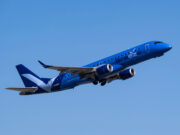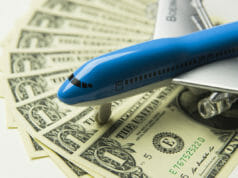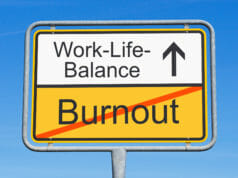 In an industry where a pilot may spend up to 200-250 days on the road away from home, time off becomes the single most important aspect of quality of life for virtually every pilot in the industry as this would be the time they can pursue hobbies, time with family, home chores, and in many cases day to day personal business.
In an industry where a pilot may spend up to 200-250 days on the road away from home, time off becomes the single most important aspect of quality of life for virtually every pilot in the industry as this would be the time they can pursue hobbies, time with family, home chores, and in many cases day to day personal business.
With relation to airlines, paid time off falls into several categories.
The first of these categories is scheduled days off. Since the industry is predicated on minimum monthly guarantee, the greater the number of scheduled days the pilot has off without reducing guarantee, the higher the quality of life for the pilot. As an example, if a pilot at Airline A has a minimum monthly guarantee of 75 hours, and a pay rate of $30 per hour with a minimum of 12 days a month off, and a pilot at Airline B has the same guarantee, the same pay, but only 10 guaranteed days off, then the pilot at Airline A will have 20% more time off than the pilot at Airline B while still being guaranteed the same money. Of course, this is independent of the number of hours worked each month and might also apply to line holders or pilots who fly more hours per month.
Airlines will often have other stipulations negotiated into their contract which may improve or degrade quality of life even when all other factors are equal. For instance, Airline A and Airline B might both have a minimum of 12 days a month guaranteed in their contract, but Airline A might have a provision that requires at least 4 days off together, while Airline B may have no such provision. This can be a significant factor that might be in favor of Airline A because days off that are grouped together are usually more relaxing and productive for a pilot. This can be especially true for commuters who may spend a significant portion of their days off traveling to their base of employment. Another benefit to larger blocks of days off is that it will typically force trips to be more productive since the airline will have to schedule the same number of hours in the days available. This can have the side effect of reducing sit times, increasing block times, or other things that may improve productivity.
Some airlines may also have factors that negatively affect the quality of a schedule. For instance, Airline C may have a provision in their contract where they are able to reduce the minimum number of days off allotted in the contract under certain conditions. This can have a majorly adverse effect on the pilot, as it can increase their time away from home, reduce productivity and greatly impact their personal activities.
The second important aspect of paid time off is vacation accrual times. This is obviously above and beyond scheduled days off, and typically is the same as what an employee would get at any job with a normal schedule. In most cases, the pilot will accrue vacation hours per month or per pay period as they would at any job. Obviously, the more hours a pilot gains per time period, the higher their quality of life will be since that time off effectively converts into time off. As an example, Airline A’s contract may provide that any pilot with a tenure of 1-5 years accrues 5 hours per month, any pilot with 5-10 years of tenure accrues 7 hours of vacation per month and any pilot with a tenure of 15+ years accrues 10 hours per month. On the other hand, Airline B may only award 3 hours of vacation per month for anything less than 5 years and 5 hours per month above 5 years. Obviously, this is going to have a very large and measurable impact on quality of life since vacation time can be converted directly into income. In this case, the first year pilot at Airline A will be earning 60 hours of vacation per year, while the first year pilot at Airline B will earn 36 hours, or 40% less vacation time.
Since this is aviation, of course it is more complex than that. The other important factor that is going to affect vacation is how that time is “spent” when the pilot uses it to get time off. The reason this difference exists is because time is not typically credited on a 1 hour for 1-hour basis as it would be with a normal 40-hour work week. Since an airline pilot’s “salary” is based on a minimum monthly guarantee, the airlines will typically have a conversion rate for vacation time. For instance, if Airline A considers 3.75 hours to be the value of a work day (as negotiated in the contract), then the 60 hours of vacation earned in the example above would convert to nearly a full month of vacation time. If Airline B has the same conversion factor as Airline A, the pilot at Airline B will see just under 10 days of vacation time in that first year. It goes without saying that the difference between 16 days off and 9.5 days off is pretty significant. In a case where Airline B also charges 5 hours of vacation time for one day versus the 3.75 hours, the difference is even more significant. This is why it is paramount that the pilot understands how they are being “charged” for their vacation time as provided in their contract. Most airlines will have a minimum threshold that a pilot must meet (minimum monthly credit) in order to keep their guarantee. So if Airline A requires 50 hours of minimum credit to pay the guarantee of 75 hours (this allows for variance in schedules and also allows some flexibility in pilots adjusting their trips), the pilot may be able to get a full month off with his vacation bank. If Airline B has a minimum credit of 60 hours, then a pilot at that airline will have to use an extra 10 hours in order to get minimum guarantee and still get the entire month off. Of course, they don’t have to get the whole month off, but the concept of trading vacation hours for days off at a specific rate is pretty standard.
Some airlines may also allow additional flexibility with vacation time such as being able to take vacation one day at a time, versus having to take it in blocks. That is something the pilot will have to understand about their particular contract.
The final form of paid time off that typically exists under normal life circumstances is bereavement time. Bereavement time would be in addition to the disability circumstances that were previously discussed. Bereavement time is allowed for those situations in life when events happen that would require the pilot to need time off in order to be with a loved one, attend a funeral, etc. Policies on this will vary by airline, but most airlines will have some accommodation for this reality of life. Airline A may have identical provisions for bereavement time as Airline B, but may also include a clause or stipulation that additional time may be awarded at the discretion of a chief pilot, versus Airline B who may strictly only allow time under the circumstances outlined in the contract. In certain situations, this might make a difference in the ability of a pilot to get paid time off for the purpose of grieving or sorting personal affairs. This type of time off could really be viewed as a safety function as well as a quality of life function as this can be a major stressor in a pilot’s life during an already very stressful time.
In all cases, paid time off or PTO, as it is commonly referred to, is a major factor in the quality of life of a pilot and should be carefully understood and considered when choosing the best place to work as it can have a tangible and significant effect on a pilot’s happiness.





















































